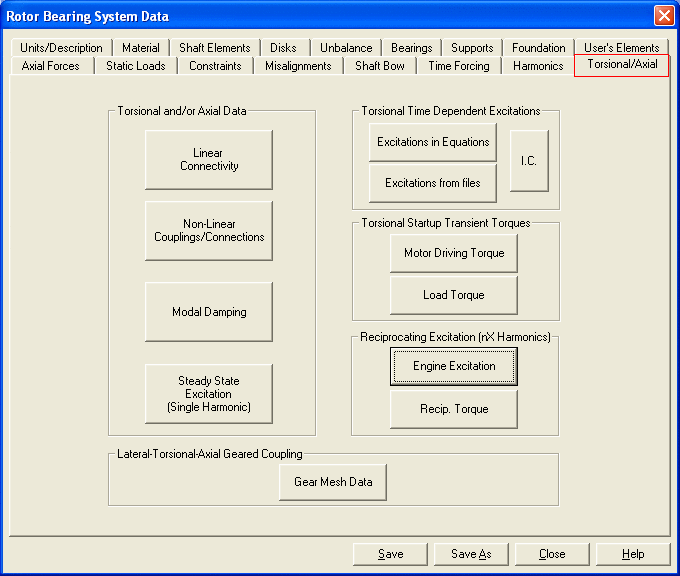
This folder allows you to input the additional data required for Torsional and/or Axial vibrations. The buttons for Connectivity, Modal Damping, and Steady State Excitation are for torsional or axial vibration. The buttons for Non-Linear Coupling, the time dependent excitations in equations entered in Torsional Excitations in Equation, the time dependent excitations in data files entered in Torsional Excitations in Data Files, Driving Torque, and Load Torque are only for torsional transient analysis. Engine Excitation is the excitation inputs for the gas or diesel engines. Reciprocating Excitation is the steady state torsional excitation from the reciprocating machine. Initial Condition is used to specify the torsional displacement (theta) and velocity (theta dot) initial conditions (rad, rad/sec) for the torsional time transient analysis.
The Connectivity allows you to input the linear stiffness and damping or constraints. The Modal Damping allows you to input the damping factors, if the direct damping is not available. The Non-Linear Connection/Coupling allows you to input the nonlinear couplings and connections. The Steady State Excitation allows you to input the excitations for steady state forced torsional analysis. The time dependent torsional excitations allow you to input the excitation torques in a form of either in equations or from a data file. The Driving Torque and Load Torque are the torques required for the Torsional Transient Startup Analysis, which are speed dependent.

If you want to analyze the coupled Lateral-Torsional-Axiial vibration for a geared system, then you will need to enter Gear Mesh Data..
See also Connectivity, Modal Damping, Non-Linear Coupling, Steady State Excitation, Time Dependent Torsional Excitations, Driving Torque, Load Torque, Engine Excitation, Reciprocating Excitation, Gear Mesh Data.
Copyright © 2014-2017